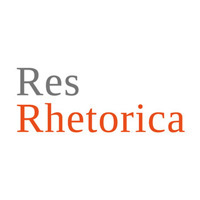The rhetoric of ecology in the post-apocalyptic cinematic landscape
The rhetoric of ecology in the post-apocalyptic cinematic landscape
Author(s): Evdokia StefanopoulouSubject(s): Anthropology, Communication studies, Film / Cinema / Cinematography
Published by: Polskie Towarzystwo Retoryczne
Keywords: post-apocalyptic films;cinematic landscape; rhetorical enviromentality; I Am Legend; Mad Max: Fury Road;
Summary/Abstract: Contemporary post-apocalyptic films portray a world ravaged by ecological catastrophes, and humanity on the brink of extinction. Such films echo the urgent environmental discourses of the Anthropocene, while offering instances of a post-anthropocentric perspective and the new subject-formations it engenders. The article argues that the central rhetorical device that generates an ecocritical perspective in such films is the post-apocalyptic landscape. Cinematic space shapes the meaning of all films, and this is even more emphatic when setting is transformed into landscape (Lefebvre 2006). What is more, in the post-apocalyptic films, the landscape becomes the main site of the films’ “rhetorical enviromentality” (McMurry 2017). The article examines the post-apocalyptic landscape in I Am Legend (2007) and Mad Max: Fury Road (2015) and how it articulates the entangled relation between humans and the collapsing world that surrounds them. Using Rosi Braidotti’s (2013) post-human theory, I contend that these cinematic landscapes hint at an “eco-philosophy of multiple belongings” (Braidotti 2013, 49) and enact “a process of redefining one’s sense of attachment and connection to a shared world” (Braidotti 2013, 2019). Ultimately, I conclude that the affective appeal of these landscapes implicates the viewer in post-anthropocentric perspectives, thus prompting new modes of environmental consciousness.
Journal: Res Rhetorica
- Issue Year: 8/2021
- Issue No: 2
- Page Range: 38-54
- Page Count: 17
- Language: English

